Baton Rouge, Louisiana, Hgh State Clinic, Hgh Injections, Hrt Doctors
Baton Rouge, Louisiana Blood Testing Facilities
 Represents a LabCorp blood testing facility
Represents a LabCorp blood testing facility Represents a Quest Diagnostics blood testing facility
Represents a Quest Diagnostics blood testing facility

Nearby Labcorp Blood Testing facilities:
- Labcorp Center Distance: 5 m, 7922 Summa Ave. Ste. A-2, Baton Rouge, East Baton Rouge Parish, LA, 70809
- Labcorp Center Distance: 8 m, 11441 Industriplex Blvd Ste 140, Baton Rouge, East Baton Rouge Parish, LA, 70809
- Labcorp Center Distance: 22 m, 1124 S. Burnside Rd A-100, Gonzales, Ascension Parish, LA, 70737
- Labcorp Center Distance: 42 m, 1109 C M Fagan Drive Suite J, Hammond, Tangipahoa Parish, LA, 70403
- Labcorp Center Distance: 48 m, 1501 Hospital Ave, Franklin, St Mary Parish, LA, 70538
- Labcorp Center Distance: 52 m, 217 La Rue France, Lafayette, Lafayette Parish, LA, 70508
- Labcorp Center Distance: 55 m, 4906 Ambassador Caffery C-1, Lafayette, Lafayette Parish, LA, 70508
- Labcorp Center Distance: 61 m, 3555 Loyola Dr Suite C, Kenner, Jefferson Parish, LA, 70065
- Labcorp Center Distance: 63 m, 71380 Highway 21 Ste 102, Covington, St Tammany Parish, LA, 70433
- Labcorp Center Distance: 65 m, 826 School Street, Houma, Terrebonne Parish, LA, 70360
- Labcorp Center Distance: 67 m, 4330 Loveland St Suite C, Metairie, Jefferson Parish, LA, 70006
- Labcorp Center Distance: 74 m, 1716 Saint Charles Ave, New Orleans, Orleans Parish, LA, 70130
- Labcorp Center Distance: 75 m, 4520 Wichers Dr Ste 103, Marrero, Jefferson Parish, LA, 70072
- Labcorp Center Distance: 79 m, 120 Meadowcrest St, Gretna, Jefferson Parish, LA, 70056
- Labcorp Center Distance: 84 m, 700 Gause Blvd Ste 102, Slidell, St Tammany Parish, LA, 70458
- Labcorp Center Distance: 86 m, 105 Medical Center Drive 102A, Slidell, St Tammany Parish, LA, 70461
Nearby Quest Blood Testing facilities:
- Quest Center Distance: 5 m, 7731 Perkins Road, Baton Rouge, East Baton Rouge Parish, LA, 70810-1080
- Quest Center Distance: 41 m, 1445 South Morrison Boulevard, Hammond, Tangipahoa Parish, LA, 70403-5705
- Quest Center Distance: 47 m, 501 Rue De Sante, La Place, St John the Baptist Parish, LA, 70068-5404
- Quest Center Distance: 54 m, 5000 Ambassador Caffery, Lafayette, Lafayette Parish, LA, 70508-6984
- Quest Center Distance: 61 m, 200 W Esplanade Ave, Kenner, Jefferson Parish, LA, 70065-2489
- Quest Center Distance: 62 m, 1826 Martin Luther King Blvd, Houma, Terrebonne Parish, LA, 70360-2499
- Quest Center Distance: 63 m, 706 W 15Th Ave, Covington, St Tammany Parish, LA, 70433-2416
- Quest Center Distance: 64 m, 4244 Highway 22, Mandeville, St Tammany Parish, LA, 70471-1281
- Quest Center Distance: 67 m, 3908 Veterans Memorial Blvd, Metairie, Jefferson Parish, LA, 70002-5641
- Quest Center Distance: 73 m, 6600 Franklin Ave, New Orleans, Orleans Parish, LA, 70122-5715
- Quest Center Distance: 74 m, 3525 Prytania Street, New Orleans, Orleans Parish, LA, 70115-3500
- Quest Center Distance: 75 m, 4700 Wichers Dr, Marrero, Jefferson Parish, LA, 70072-3023
- Quest Center Distance: 77 m, 2600 Belle Chasse Hwy, Terrytown, Jefferson Parish, LA, 70056-7156
- Quest Center Distance: 86 m, 2040 Gause Blvd E, Slidell, St Tammany Parish, LA, 70461-5453
Baton Rouge Louisiana Hormone Replacement Therapy Services
As one grows older, maintaining good health starts to become a higher priority just as it becomes harder to maintain. There are many reasons why this is the case, but one of the most common is Hormone Deficiency. Hormones are the chemical messengers which keep your body functioning at its optimal capacity, and as particular Hormones fall into decline or are produced in excess, this has a negative impact on the overall health of the body.
The Conscious Evolution Institute specializes in techniques and therapies that are designed to restore Hormone Balance and get you on the right track to feel better than you have in years. Our Licensed and Board-Certified Hormone Clinic provides efficient, high quality care to all fifty states, including all of Louisiana and the Baton Rouge area.
We have medical associates in your area which aid us in our quest to enhance your Hormone State by providing us with the exact information and medical data that we require to make a nuanced diagnosis and provide you with the most effective Hormone Treatments available today. If you are interested in the Hormone Services we provide at the Conscious Evolution Institute, we encourage you to give us a call at the number you see above, or simply complete the contact form that you see on this page for more information.
Baton Rouge Louisiana Low-T Treatments with Testosterone Injections, Gels, and Patches
Testosterone is one of the keys to protecting male virility and masculinity, and it's becoming increasingly clear that the hormone has a protective effect on the heart and the cardiovascular system. Testosterone Deficiency becomes increasingly likely for every year that a man ages past thirty, and is associated with a litany of symptoms, including:
Erectile Dysfunction
Loss of Sex Drive
Depression
Anxiety
Fatigue
Loss of Muscle Mass
Weight Gain
Increased Risk of Heart and Cardiovascular Issues
Millions of men use Testosterone Therapy for Low-T to restore normal, youthful Testosterone Levels and reverse the effects of Low-T, but research shows that there are millions more across America that could benefit, but have not sought out Treatment. Let our Testosterone Specialists help you get the treatment that you need, with High Quality Testosterone Products like Low-T Patches, Gels, and Injections delivered straight to your home or office!
Baton Rouge Louisiana Human Growth Hormone Deficiency Clinics
In addition to our Low-T Andropause Treatments, we also offer HRT Therapies designed to treat Human Growth Hormone Deficiency, which is increasingly considered to be a central cause of impaired health and wellness among many aging men and women. HGH is produced by the human body in order to mediate cellular metabolism and optimize physiological process all throughout the body.
Unfortunately, beginning in the late twenties and early thirties, the pituitary gland starts to produce Human Growth Hormone at increasingly lower concentrations, causing the body to lose its physiological efficiency when those levels drop beyond a certain threshold. Luckily, for patients suffering from Age-Related HGH Deficiency, or Somatopause, Growth Hormone Injection Therapy can mitigate the effects of HGH Deficiency on the body by restoring Growth Hormone Levels to a more youthful, normal range.
Our Licensed Hormone Clinic also offers an HGH Alternative, Sermorelin Acetate Therapy, which has also been shown to be a highly effective Treatment for HGH Deficiency, and may even be the ideal treatment for many patients! Sermorelin Injections are less expensive than Human Growth Hormone, and also have the advantage of being available for Off-Label Prescription. Ask us about the pros and cons of HGH vs. Sermorelin!
Baton Rouge Louisiana Information
Baton Rouge is most notable for being the site of Louisiana State University, home of the LSU Tigers of the Southeastern Conference. Baton Rouge is located on the eastern shore of the Mississippi River, and is an important inland port for the Southeastern United States. Baton Rouge is also the capital of the state of Louisiana, and is referred to as The Capital City for the same reason. The city is also nicknamed the Red Stick, which is the English translation of the city's name.
The city earned its name because of the red pole used by the Native Americans in the area to demarcate the territories between two adjacent tribes. Baton Rouge also goes by the nickname, The Chemical City, because the city is an important location for chemical manufacture and distribution, owing largely to the oil wells in the Gulf of Mexico.
Baton Rouge has a complex culture owing to the diversity inherent in both the city's location and its history. The city has a large Vietnamese and Hispanic population for where the city is located, and the city is largely comprised of people of creole and cajun descent. In addition to LSU, Southern University, Our Lady of the Lake College, and Baton Rouge Community College are located in the city, meaning that Baton Rouge has a large youth population which heavily influences the direction of the city and its culture.
There are a number of museums and event centers in Baton Rouge, including the Reilly Theater, the Baton Rouge River Center, the Baton Rouge Gallery, the Louisiana Art and Science Museum, and the LSU Museum of Art. There are a number of annual events that are celebrated every year in the city, including the Red Stick International Animation Festival, Mardi Gras, the Greater Baton Rouge State Fair, and Restaurant Week.
Baton Rouge Louisiana Jobs and Economy
Baton Rouge is notable for its strong and diversified economy. The most lucrative aspect of the Baton Rouge Economy is petrochemical manufacture. Baton Rouge is the furthest north on the Mississippi River that full-size cargo ships and tankers can safely come to port, which means that the city easily maintains a strong economy even in the toughest of markets. Major companies involved with the petrochemical market include NanYa Technology Corporation, Dow Chemical Company, Albemarle Corporation, and ExxonMobil, which has one of the biggest oil refineries in both the United States and the entire world. Other important employment sectors in Baton Rouge include state government, education, medicine, and, increasingly, film and theater production.
All About Baton Rouge, Louisiana Geographic Area

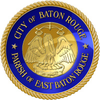
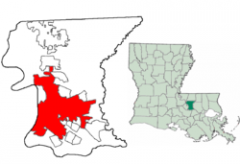
Baton Rouge ( /ËubR¦tÉon ËnruËaÊa/; French: BR¢ton-Rouge [bÉatÉeÌc ÊauÊa] (
/ËubR¦tÉon ËnruËaÊa/; French: BR¢ton-Rouge [bÉatÉeÌc ÊauÊa] ( listen); Choctaw: Itta Homma; "red stick") is the capital of the U.S. state of Louisiana. It is located in East Baton Rouge Parish and is the second largest city in the state.
listen); Choctaw: Itta Homma; "red stick") is the capital of the U.S. state of Louisiana. It is located in East Baton Rouge Parish and is the second largest city in the state.
Baton Rouge is a major industrial, petrochemical, medical, and research center of the American South. The Port of Baton Rouge is the ninth largest in the United States in terms of tonnage shipped, and is the farthest upstream Mississippi River port capable of handling Panamax ships.
The Baton Rouge area, also known as the "Capital Area", is located in the southeast portion of the state along the Mississippi River. It owes its historical importance to its site upon Istrouma Bluff, the first bluff upriver from the Mississippi River Delta, which protects the city aos residents from flooding, hurricanes, and other natural disasters. In addition to this natural barrier, the city has built a levee system stretching from the bluff southward to protect the riverfront and low-lying agricultural areas.
The city of Baton Rouge has a population of 229,553 as of the 2010 census. The metropolitan area, known as Greater Baton Rouge, has a population of 802,484 people as of 2010.
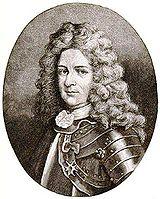
The European-American history of Baton Rouge dates from 1699, when French explorer Sieur d'Iberville leading an exploration party up the Mississippi River saw a reddish cypress pole festooned with bloody animals that marked the boundary between the Houma and Bayou Goula tribal hunting grounds. They called the pole and its location le bR¢ton rouge, or the red stick. The local Native American name for the site was Istrouma. (See Creek Wars for discussion of Red Sticks as related to Creek group.)
From evidence found along the Mississippi, Comite, and Amite rivers, and in three Native American mounds remaining in the city, archaeologists have been able to date indigenous habitation of the Baton Rouge area to 8000 BC. The mounds were built by hunter-gatherer societies in the Middle Archaic period, perhaps as early as 4500 BC, more than a thousand years before the pyramids of Egypt were begun.
The settlement of Baton Rouge by Europeans began in 1719 when Baton Rouge was established as a military post by the French. During the French colonial period, most settlement and agricultural development was concentrated in the area of New Orleans, which became a port for the colony.
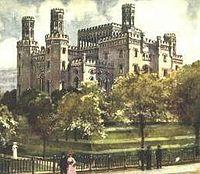
Since European settlement, Baton Rouge has been governed by France, Britain, Spain, Louisiana, the Florida Republic, the Confederate States, and the United States. In 1755, when French-speaking settlers of Acadia in Canada's Maritime were driven into exile by British forces, many took up residence in rural Louisiana. Popularly known as Cajuns, the descendants of the Acadians maintained a separate culture that immeasurably enriched the Baton Rouge area. During the first half of the 19th century, the city grew steadily as the result of steamboat trade and transportation.
Incorporated in 1817, Baton Rouge became Louisiana's state capital in 1849. The architect James Dakin was hired to design the Capitol building in Baton Rouge. Rather than mimic the federal Capitol in Washington, as many other states had done, he designed a Neo-Gothic medieval cathedral, complete with turrets and crenellations, and stained glass, which overlooks the Mississippi. It has been described as the "most distinguished example of Gothic Revival" architecture in the state.
By the outbreak of the Civil War, the population of Baton Rouge was 5,500. The war halted economic progress and the Union Army occupied Baton Rouge in the spring of 1862. The Confederates at first consolidated their forces elsewhere, during which time the state government was moved to Opelousas and later Shreveport. In the summer of 1862, some 2,600 Confederate troops under generals John C. Breckinridge (the former Vice President of the United States) and Daniel Ruggles attempted in vain to regain control of Baton Rouge. After the end of the war, New Orleans served as the seat of the Reconstruction-era state government. When Bourbon Democrats regained power in 1882, they returned the state government to Baton Rouge, where it has since remained.
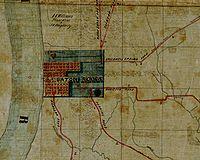
Karl Baedeker in his 1893 guidebook described Baton Rouge as "the Capital of Louisiana, a quaint old place with 10,378 inhabitants, on a bluff above the Mississippi."
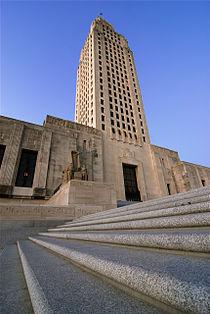
In the 1950s and 1960s, Baton Rouge experienced a boom in the petrochemical industry, causing the city to expand away from the original center. In recent years, government and business have begun a move back to the central district. A building boom that began in the 1990s continues today, with multi-million dollar projects for quality of life improvements and new construction happening all over the city.
In the 2000s (decade), Baton Rouge has proven to be one of the fastest-growing cities in the South in terms of technology. Baton Rouge's population temporarily exploded after Hurricane Katrina, as it accepted as many as 200,000 displaced residents. Metropolitan Baton Rouge is one of the fastest growing metropolitan areas in the U.S. (under 1 million), with 602,894 in 2000 and 802,484 people as of the 2010 census. Some estimates indicate that the Baton Rouge metro area could reach 900,000 residents as soon as 2013.
The city has a vibrant mix of the cultures found throughout Louisiana, from which it developed its motto: "Authentic Louisiana at every turn".
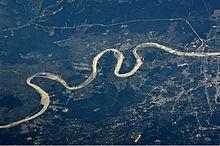
Baton Rouge is located at 30 °27 a²29 a³N 91 °8 a²25 a³W / 30.45806 °N 91.14028 °W / 30.45806; -91.14028 (30.458090, na91.140229).
According to the United States Census Bureau, the city has a total area of 79.1 square miles (204.9 km2), of which 76.8 square miles (198.9 km2) is land and 2.2 square miles (5.7 km2) (2.81%) is water.
Baton Rouge is the third southmost capital city in the continental United States, after Austin, Texas and Tallahassee, Florida.
Baton Rouge has a humid subtropical climate (Koppen Cfa), with mild winters, hot and humid summers, moderate to heavy rainfall, and the possibility of damaging winds and tornadoes yearlong. Baton Rouge's proximity to the coastline exposes the metropolitan region to hurricanes. Snow is rare, although it snowed in three recent, consecutive calendar years; on December 11, 2008, on December 4, 2009, and again on February 12, 2010. Hurricane Gustav was the worst hurricane ever to strike the Baton Rouge area. Winds topped 100 mph, knocking down trees and powerlines and making roads impassable. The roofs of many buildings suffered tree damage, especially in the Highland Road, Garden District, and Goodwood Areas. The city was shut down for five days and a curfew was put in effect. Rooftop shingles were ripped off, signs blown down, and minor structural damage occurred.
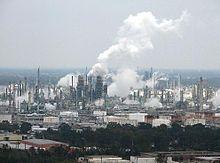
Baton Rouge enjoys a strong economy that has helped the city be ranked as one of the "Top 10 Places for Young Adults" in 2010 by Portfolio Magazine and one of the top 20 cities in North America for economic strength by Brookings. In 2009, the city was ranked as the 9th best place in the country to start a new business by CNN. The city is home to one Fortune 500 company and one Fortune 1000 company, including Shaw Group. Lamar Advertising Company has its headquarters in Baton Rouge.
Baton Rouge is the farthest inland port on the Mississippi River that can accommodate ocean-going tankers and cargo carriers. The ships transfer their cargo (grain, crude, cars, containers) at Baton Rouge onto rails and pipelines (to travel east-west) or barges (to travel north). Deep-draft vessels cannot pass the Old Huey Long Bridge because the clearance is insufficient, and the river depth decreases significantly just to the north, near Port Hudson.
Baton Rouge's largest industry is petrochemical production and manufacturing. The ExxonMobil facility in Baton Rouge is the second-largest oil refinery in the country; it is among the world's 10 largest. Baton Rouge also has rail, highway, pipeline, and deep water access. Albemarle is headquartered in Baton Rouge. Dow Chemical Company has a large plant in Iberville Parish near Plaquemine. NanYa Technology Corporation has a large facility in North Baton Rouge that makes PVC and CPVC pipes. Shaw Construction, Turner, and Harmony all started with performing construction work at these plants.
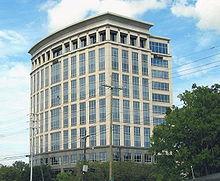
As well as being the state capital and parish seat, the city is also the home of Louisiana State University. One of the largest single employers in Baton Rouge is the state government, which recently consolidated all branches of state government downtown at the "Capitol Park" complex.
The research hospitals Our Lady of the Lake, Our Lady of the Lake Children's Hospital (affiliated with St. Jude Children's Research Hospital), Mary Bird Perkins Cancer Center, and Earl K. Long, helped by an emerging medical corridor at Essen Lane/Summa Avenue/Bluebonnet Boulevard, are positioning Baton Rouge to eventually support a medical district similar to the Texas Medical Center. LSU and Tulane have both announced plans to construct satellite medical campuses in Baton Rouge to partner with Our Lady of the Lake Medical Center and Baton Rouge General Medical Center, respectively.
Southeastern Louisiana University and Our Lady of the Lake College both have nursing schools in the medical district off Essen Lane. Louisiana State University's Pennington Biomedical Research Center, which conducts clinical and biological research, also contributes to research-related employment in the area around the Baton Rouge medical district.
The film industry, like in neighboring New Orleans, is a strong growth industry in Baton Rouge, which is now home to a new and expanding movie studio known as Celtic Media Center. Numerous films and movies are filmed in the Baton Rouge area every year. Because of generous state tax credits, there has been significant development in post production facilities and movie studios in the region.
According to the City's 2009 Comprehensive Annual Financial Report, the top employers in the city were:
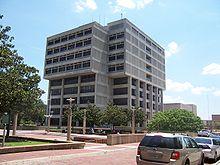
As of the census of 2010, there were 229,553 people; per the 2010 census, 88,973 households, and 52,672 families residing in the city. The 2000 population density was 2,964.8 people per square mile (1,144.7/km ²). There were 97,388 housing units at an average density of 1,267.3 per square mile (489.4/km ²). The racial makeup of the city was 50.02% Black or African American, 45.70% White, 0.18% Native American, 2.62% Asian, 0.03% Pacific Islander, 0.49% from other races, and 0.96% from two or more races. Hispanic or Latino of any race were 1.72% of the population. Non-Hispanic Whites were 37.8% of the population in 2010, down from 70.5% in 1970.
Of all households, 28.1% had children under the age of 18 living with them, 35.8% were married couples living together, 19.0% had a female householder with no husband present, and 40.8% were non-families. 31.7% of all households were made up of individuals and 8.6% had someone living alone who was 65 years of age or older. The average household size was 2.42 and the average family size was 3.12.
In the city the population was spread out with 24.4% under the age of 18, 17.5% from 18 to 24, 27.2% from 25 to 44, 19.4% from 45 to 64, and 11.4% who were 65 years of age or older. The median age was 30 years. For every 100 females there were 90.5 males. For every 100 females age 18 and over, there were 86.3 males.
The median income for a household in the city was $30,368, and the median income for a family was $40,266. Males had a median income of $34,893 versus $23,115 for females. The per capita income for the city was $18,512. About 18.0% of families and 24.0% of the population were below the poverty line, including 31.4% of those under age 18 and 13.8% of those ages 65 or over.
At the 2005 ae2007 American Community Survey 3-Year Estimates, 32.4% of the population had a Bachelor's degree or higher.
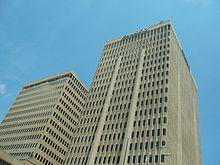
Baton Rouge has many neighborhoods both inside and outside the city limits:
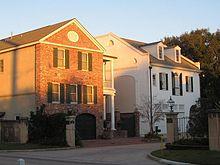
The United States Postal Service operates post offices in Baton Rouge. The Baton Rouge Central Post Office is located at 750 Florida Street in Downtown Baton Rouge.
Baton Rouge is the middle ground of South Louisiana cultures, having a mix of Cajun and Creole Catholics and Baptists of the Florida Parishes and South Mississippi. Baton Rouge is a college city with Baton Rouge Community College, Louisiana State University, Our Lady of the Lake College, and Southern University whose students make up some 20% of the city population. There is a sizable international population of about 11,300, the largest of which are people of Hispanic or Vietnamese descent. Due to this, Baton Rouge has come to have a unique culture as well as be a representation of many different heritages.
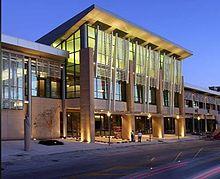
Baton Rouge has an expanding visual arts scene, which is centered downtown. This increasing collection of venues includes the Shaw Center for the Arts. Opened in 2005, this award-winning facility houses the Brunner Gallery, LSU Museum of Art, the Manship Theatre, a contemporary art gallery, traveling exhibits, and several eateries. Another prominent facility is the Louisiana Art and Science Museum (LASM), which contains Irene W. Pennington Planetarium, traveling art exhibits, space displays, and an ancient Egyptian section. Several smaller art galleries, including the Baton Rouge Gallery, offering a range of local art are scattered throughout the city.
The city has several designated arts & cultural districts, the most prominent of which are the Mid-City Cultural District and the Perkins Road Arts District. These districts provide tax incentives, mostly in the form of exempting state tax on purchases, to promote cultural activity in these areas.
There is also an emerging performance arts scene. The Baton Rouge Little Theater offers a diverse selection of live theatre performances. Opera Louisiane is Baton Rouge's newest and only professional opera company. The Baton Rouge Ballet Theatre is Baton Rouge's professional dance company. The Nutcracker ae A Tale from the Bayou sets the familiar holiday classic in 19th-century Louisiana and has become a Baton Rouge holiday tradition. A Tale from the Bayou features professional dancers, a live orchestra and more than 300 area children.
Performing venues include the Baton Rouge River Center, Baton Rouge River Center Theatre for the Performing Arts, which seats approximately 1900, the Manship Theatre, which is located in the Shaw Center for the Arts and seats 350, as well as the Reilly Theater which is home to Swine Palace, a non-profit professional theater company associated with the Louisiana State University Department of Theatre.
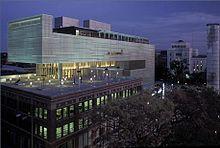
In addition, the Baton Rouge Symphony Orchestra has been in service for 61 years, and currently operates at the River Center Music Hall downtown. Today, there are over 60 concerts annually performed by the Baton Rouge Symphony Orchestra directed by Timothy Muffitt and David Torns. The BRSO's educational component, the Louisiana Youth Orchestra, made its debut in 1984 and currently includes almost 180 musicians under the age of 20.
Many events take place throughout the year, the biggest of which is Mardi Gras. Every year Baton Rouge hosts many Mardi Gras parades, the largest one being held in historic Spanish Town. Other festivals include FestforAll, Louisiana Earth Day, Mardi Gras season, the St. Patrick's Day Parade, Bayou Country Superfest, and Red Stick International Animation Festival.
The major daily newspaper is The Advocate, publishing since 1925. Prior to October 1991, Baton Rouge also had an evening newspaper, The State-Times aeat that time, the morning paper was known as "The Morning Advocate." Other publications include: Greater Baton Rouge Business Report, 225 magazine, inRegister magazine, 10/12 magazine, LSU Daily Reveille, LSU Tiger Weekly, The Southern Review, Country Roads magazine, 225Alive, Healthcare Journal of Baton Rouge, Southern University Digest, and the South Baton Rouge Journal. Other newspapers in East Baton Rouge Parish include the Central City News and the Zachary Post.
Greater Baton Rouge area is well served by television and radio. The market is the 95th largest Designated Market Area (DMA) in the U.S. Major television network affiliates serving the area include:

Baton Rouge also offer local Government-access television (GATV) only channels on Cox Cable. Metro 21 on channel 21, Cox 4 on channel 4, and Catholic Life on channel 15.
College sports play a major role in the culture of Baton Rouge. The LSU Tigers and the Southern University Jaguars are the two most popular teams and provide the city's biggest entertainment during football season. The LSU Tigers have achieved several national championship titles in various sports, including football and baseball. The teams' dominance of the city's sports scene is evidenced by the numerous shops and restaurants around town that sell and display memorabilia. College baseball, basketball and gymnastics are also popular.
Baton Rouge has a successful rugby team, the Baton Rouge Redfish 7, which began playing in 1977 and has won numerous conference championships. Currently, the team competes in the Deep South Rugby Union as a Division II team.
The city has an Australian rules football team, the Baton Rouge Tigers, which began playing in 2004 competes in the USAFL.
The city also has a minor-league soccer team, the Capitals, who play in the PDL (USL Premier Development League). Currently, the team plays home games in Olympia Stadium.
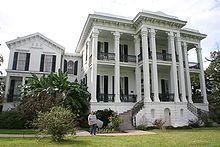
There are many architectural points of interest in Baton Rouge, ranging from antebellum to modern. The neo-gothic Old Louisiana State Capitol was built in the 1890s as the first state house in Baton Rouge and was later replaced by the 450 feet (137 m) tall, art-deco New Louisiana State Capitol which was the tallest building in the South when it was completed. Several plantation homes in the area such as Magnolia Mound Plantation House, Myrtles Plantation, and Nottoway Plantation showcase antebellum-era architecture. Louisiana State University has over 250 buildings in Italian Renaissance style, one of the nation's largest college stadiums, and is endowed with many live oaks. Several examples of modern and contemporary buildings are downtown, including the Louisiana State Museum. A number of structures, including the Baton Rouge River Center, Louisiana State Library, LSU Student Union, Louisiana Naval Museum, Bluebonnet Swamp Interpretive Center, Louisiana Arts and Sciences Center, Louisiana State Archive and Research Library, and the Pennington Biomedical Research Center, were designed by local architect John Desmond. Yazoo and Mississippi Valley Railroad Company Depot, currently houses the Louisiana Art and Science Museum.
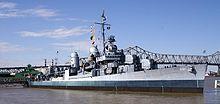
Museums around town offer a variety of genres. The Louisiana State Museum and the Old Louisiana State Capitol Museum display information on state history and have many interactive exhibits. The Shaw Center for the Arts showcases and the Louisiana Art and Science Museum showcase varied arts. LASM also includes science exhibits and a planetarium. Other museums include the LSU Museum of Natural Science and the USS Kidd.
Baton Rouge has an extensive park collection run through BREC (The Recreation & Park Commission for the Parish of East Baton Rouge). The largest park is City Park near LSU and is currently undergoing a complete remodeling. The Baton Rouge Zoo is run through BREC and includes 1800+ species.
Other attractions include the Mall at Cortana and the Mall of Louisiana (Louisiana's two largest malls) and Perkins Rowe, amusement parks of Dixie Landin'/ Blue Bayou, and dining at the Louisiana-cuisine restaurants.
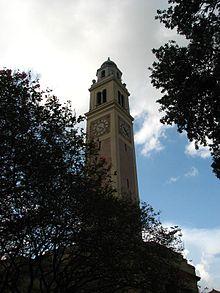
East Baton Rouge Parish Public Schools operates primary and secondary schools serving the city.
The city of Baton Rouge is also home to 15 charter schools with a total enrollment of 3800 pupils. One of the latest includes the Mentorship Academy in downtown Baton Rouge, which leverages its location downtown to establish internship opportunities with local businesses as well as provide a high tech classroom environment to focus on a digital animation curriculum.
Louisiana State University and Agricultural and Mechanical College, generally known as Louisiana State University or LSU, is a public, coeducational university that is the main campus of the Louisiana State University System. LSU includes nine senior colleges and three schools, in addition to specialized centers, divisions, institutes, and offices. Enrollment stands at over 32,000 students, with 1,300 full-time faculty members. LSU is also one of twenty-one American universities designated as a land-grant, sea-grant and space-grant research center. In order to reverse decades of underfunding, the university recently launched an ambitious fundraising drive, called the "Forever LSU" campaign.
Southern University and A&M College is a comprehensive institution offering two associate's degree programs, 42 bachelor's degree programs, 19 master's degree programs, and five doctoral programs. The University is part of the only historically black land grant university system in the United States. Southern became a land-grant school in 1890, and an Agricultural and Mechanical department was established. The University offers programs of study ranging from associate degree to doctoral and professional degrees. It provides opportunities for students to participate in internships and summer assignments in industry and with the federal government.
Virginia College opened in October 2010 and offers students training in areas like Cosmetology, Business, Health and Medical Billing. Virginia College received senior college recognition from the Accrediting Council for Independent Colleges and Schools(ACICS) which now accredits all programs at the school's campuses.
Our Lady of the Lake College is an independent Catholic institution also in the Baton Rouge medical district that offers associate's, bachelor's, and master's degrees in programs such as nursing, health sciences, humanities, behavioral sciences, and arts and sciences. It has an associated hospital, Our Lady of the Lake Regional Medical Center. In 2010, LSU announced that it will relocate it's medical education and Hospital Services to Our Lady of the Lake Hospital in Baton Rouge as a result of a historic agreement between LSU and the training hospital. Tulane University is also opening a satellite medical school at Baton Rouge General's Mid City Campus in 2011.
Southeastern Louisiana University School of Nursing is located in the medical district on Essen Lane in Baton Rouge. Southeastern offers traditional baccalaureate and masters degree programs as well as LPN and RN to BSN articulation opportunities.
In 1980, C.B. and Irene Pennington provided $125 million for the construction of the Pennington Biomedical Research Campus in Baton Rouge.

Baton Rouge Community College is an open-admissions, two-year post-secondary public community college, established on 28 June 1995. The college settled into a permanent location in 1998. The 60-acre (240,000 m2) campus consists of five main buildings: Governor's Building, Louisiana Building, Cypress Building, Bienvenue Building (student center), and the Magnolia Library Building. The college's current enrollment is more than 8,000 students. The curricular offerings include courses and programs leading to transfer credits, certificates and associate degrees.
The State Library of Louisiana is in Baton Rouge.
Most of the Baton Rouge area's high speed internet, broadband, and fiber optic communications are provided by Eatel, AT&T Inc., Charter Communications, or Cox Communications. In 2006, Cox Communications linked its Lafayette, Baton Rouge, and New Orleans markets with fiber optic infrastructure. Other providers soon followed suit, and fiber optics have thus far proven reliable in all hurricanes since they were installed, even when mobile and broadband service is disrupted during storms.
In 2001, the Supermike computer at Louisiana State University was ranked as the number 1 computer cluster in the world, and remains one of the top 500 computing sites in the world
In 2010, Baton Rouge started a market push to become a test city for Google's new super high speed fiber optic line known as GeauxFiBR.
Baton Rouge is served by several hospitals and clinics:
Baton Rouge is home station to the Army National Guard 769th Engineer Battalion, which recently had units deployed to Iraq and Afghanistan. The armory located near the Baton Rouge Airport houses three company-sized units: 769th HSC (headquarters support company); 769th FSC (forward support company); and the 927th Sapper Company. Other units of the battalion are located at Napoleonville (928th Sapper Company); Baker, Louisiana (926th MAC mobility augmentation company); and Gonzales, Louisiana (922nd Horizontal Construction Company).
The 769th Engineer Battalion is part of the 225th Engineer Brigade which is headquartered in Pineville, Louisiana at Camp Beauregard. There are four engineer battalions and an independent bridging company in the 225th Engineer Brigade which makes it the largest engineer group in the US Army Corps of Engineers.

Horace Wilkinson Bridge I-10

Huey Long Bridge
The Port of Baton Rouge is the ninth largest in the United States in terms of tonnage shipped, and is the farthest upstream Mississippi River port capable of handling Panamax ships.
Baton Rouge is connected by the following major routes: I-10 (Capital City Expressway via the Horace Wilkinson Bridge), I-12 (Republic of West Florida Parkway), I-110 (Martin Luther King Jr. Freeway), Airline Highway (US 61), Florida Boulevard (US 190) (via the Huey P. Long Bridge), Greenwell Springs Road (LA 37), Plank Road/22nd Street (LA 67), Burbank Drive & Highland Road(LA 42), Nicholson Drive (LA 30), Jefferson Highway (LA 73), Louisiana Highway 1 (LA 1) and Scotland/Baker/Zachary Highway (LA 19). The business routes of US 61/190 run west along Florida Blvd. from Airline Highway to River Road downtown. The routes also run along River Rd., Chippewa Street, and Scenic Highway from Chippewa to Airline. US 190 joins US 61 on Airline Hwy. from Florida Blvd. to Scenic Hwy., where the two highways split. US 190 continues westward on Airline to the Huey P. Long Bridge, while US 61 heads north on Scenic Hwy.
To accommodate the rapid growth of Baton Rouge, sections of its freeways have been upgraded in recent decades and there are currently plans to create a tolled freeway loop around the metropolitan area. According to the 2008 INRIX National Traffic Scorecard, which ranks the top 100 congested metropolitan areas in the U.S., Baton Rouge is the 33rd-most-congested metro area in the country. However, at a population rank of 67 out of 100, it has the second-highest ratio of population rank to congestion rank, higher than even the Los Angeles-Long Beach-Santa Ana metropolitan area, indicating a remarkably high level of congestion for the comparatively low population. According to the Scorecard, Baton Rouge was the only area out of all 100 to show an increase in congestion from 2007 to 2008 (+6%). The city also tied for the highest jump in congestion rank over the same period (14 places).
Specific problem areas include a stretch of I-12E between the Airline Highway and O'Neal Lane exits, which extends even further to the Denham Springs exit in Livingston Parish. The S. Sherwood Forest Blvd., Millerville Road, and O'Neal Lane exits all made the list of the nation's top 1000 bottlenecks in the aforementioned INRIX study. Three lanes wide in either direction until the O'Neal Lane exit, the interstate abruptly becomes two lanes in either direction thereafter. This stretch of road, called "a deathtrap" by one lawmaker, has become notorious for traffic accidents, many with fatalities. In 2007, ten people died in traffic accidents within a three-month period on this section of road. In 2009, Governor Bobby Jindal and the Baton Rouge legislative delgation were successful in allocating state and federal funding to widen this portion of I-12 to the Range Avenue Exit at Denham Springs. In 2010, The American Reinvestment and Recovery Act provided committed federal funds to widen I-12 from the Range Avenue Exit to Walker, Louisiana.
I-10W at Bluebonnet Road also ranks within the top 1000 bottlenecks for 2008, and I-10E at Essen Lane and at Nicholson Drive rank not far out of the top 1000. Though significant improvements to I-10 were made to allow for easier access to the Mall of Louisiana, the stretch of I-10 from the I-10/I-12 split to Siegen Lane, which includes the Bluebonnet exit, was not part of these improvements and remains heavily congested during peak hours. Initial work in the 87-million-dollar project to widen this segment to three lanes in both directions has begun and may take up to three years to complete. In 2010, the American Reinvestment and Recovery Act provided supplemental funding for this project to extend to the Highland Road exit in East Baton Rouge Parish.
Surface streets in Baton Rouge are no stranger to severe congestion, either. However, relief is starting to be felt after years of stagnation in road upgrades. Baton Rouge Mayor Kip Holden has instituted an extensive upgrade of East Baton Rouge Parish roads known as the Green Light Plan, geared toward improving areas of congestion on the city's surface streets. With its first project completed in October 2008, it has seen numerous others reach completion as of mid-2009, with several more under construction and still others yet to break ground.
A circumferential loop freeway has been proposed for the greater Baton Rouge metro area to help alleviate congestion on the existing through-town routes. The proposed loop would pass through the outlying parishes of Livingston (running alongside property owned and marketed as an industrial development by Al Coburn, a member of President Mike Grimmer's staff), Ascension, West Baton Rouge, and Iberville, as well as northern East Baton Rouge Parish. This proposal has been subject to much contention, particularly by residents living in the outer parishes through which the loop would pass. If made a reality, the project would cost approximately $4 billion and would not be completed until 2016 at the earliest. Other suggestions considered by the community are upgrading Airline Highway (US 61) to freeway standards in the region as well as establishing more links between East Baton Rouge Parish and it's neighboring communities.
The average one-way commute time in Baton Rouge is 22 minutes, 13% shorter than the US average. Interstates 10 and 12, the two interstates that feed into the city, are highly traveled and connected by highways and four-lane roads that connect the downtown business area to surrounding parishes. 99% of the Baton Rouge workforce drives a personal vehicle to work.
Located 10 minutes north of downtown near Baker, the Baton Rouge Metropolitan Airport connects the area with the four major airline hubs serving the southern United States. Commercial carriers include American Eagle, United Airlines, Delta Air Lines and US Airways Express. Nonstop service is available to Atlanta, Dallas-Ft. Worth, Houston, Memphis and Charlotte.
Four major rail lines provide railroad freight service to Baton Rouge. Since 2006, Baton Rouge and New Orleans leaders as well as the state government have been pushing to secure funding for a new high speed rail passenger line between downtown Baton Rouge and downtown New Orleans, with several stops in between.
Capital Area Transit System (CATS) provides urban transportation throughout Baton Rouge, including service to Southern University, Baton Rouge Community College, and Louisiana State University. Many CATS buses are equipped with bike racks for commuters to easily combine biking with bus transit.
Greyhound Bus Lines, offering passenger and cargo service throughout the United States, has a downtown terminal on Florida Boulevard.
LA Swift provides transportation via charter bus from Baton Rouge to New Orleans (New Orleans to Baton Rouge),it also has other pick-up points in Sorrento, LA and LaPlace, LA . Price: $5 one -way and $10 round-trip.
After a visit to the Republic of China (Taiwan), Mayor-President Kip Holden unveiled plans to pursue a sister city agreement with a second Taiwanese city, Taipei.

Geology and Geological Hazards
Word Count: 6021







